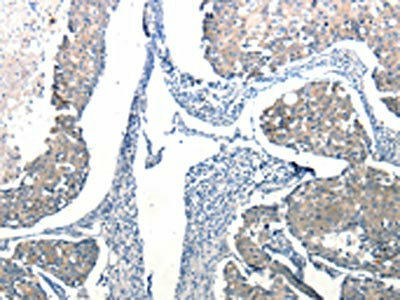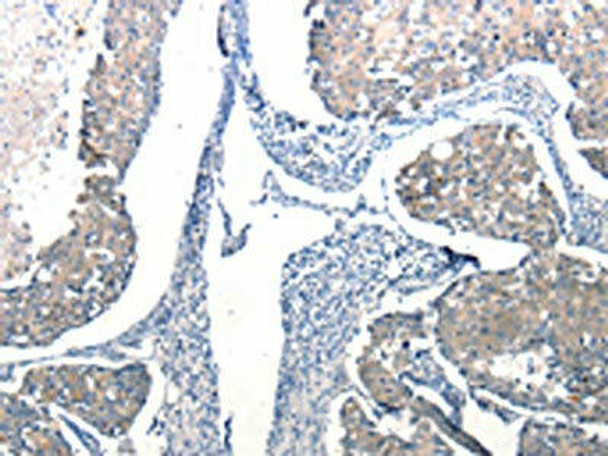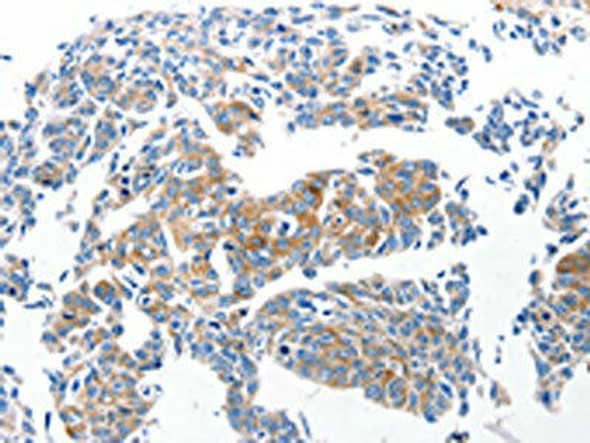Description
Ccl6 Antibody (PACO17661)
The CCL6 Polyclonal Antibody (PAC017661) is a valuable tool for researchers studying CCL6, a chemokine protein involved in immune responses and inflammation. This antibody, produced in rabbits, is highly specific to human samples and has been validated for use in Western blot applications.CCL6, also known as chemokine (C-C motif) ligand 6, plays a crucial role in recruiting immune cells to sites of inflammation and promoting immune cell activation. By targeting CCL6, researchers can unravel its role in various physiological and pathological processes, including inflammatory diseases, autoimmune disorders, and cancer progression.
The CCL6 Polyclonal Antibody binds specifically to the CCL6 protein, allowing for accurate detection and quantification in different cell types and tissues. Its high reactivity and specificity make it an ideal tool for immunology research, helping to uncover the molecular mechanisms underlying immune responses and inflammation.
| Antibody Name: | Ccl6 Antibody (PACO17661) |
| Antibody SKU: | PACO17661 |
| Size: | 50ul |
| Host Species: | Rabbit |
| Tested Applications: | ELISA, IHC |
| Recommended Dilutions: | ELISA:1:1000-1:10000, IHC:1:25-1:100 |
| Species Reactivity: | Human, Mouse |
| Immunogen: | Synthetic peptide of mouse Ccl6 |
| Form: | Liquid |
| Storage Buffer: | -20°C, pH7.4 PBS, 0.05% NaN3, 40% Glycerol |
| Purification Method: | Antigen affinity purification |
| Clonality: | Polyclonal |
| Isotype: | IgG |
| Conjugate: | Non-conjugated |
 | The image on the left is immunohistochemistry of paraffin-embedded Human breast cancer tissue using PACO17661(Ccl6 Antibody) at dilution 1/50, on the right is treated with synthetic peptide. (Original magnification: x200). |
| Background: | In mice, CCL6 is expressed in cells from neutrophil and macrophage lineages, and can be greatly induced under conditions suitable for myeloid cell differentiation. It is highly expressed in bone marrow cultures that have been stimulated with the cytokine GM-CSF. Some low levels of gene expression also occur in certain cell lines of myeloid origin (e.g. the immature myeloid cell lines DA3 and 32D cl3, and the macrophage cell line P388D) that can also be greatly induced in culture with GM-CSF. However, in activated T cell lines, expression of CCL6 is greatly reduced.CCL6 can also be induced in the mouse lung by the cytokine interleukin 13 |
| Synonyms: | chemokine (C-C motif) ligand 6 |
| UniProt Protein Function: | CCL6: Shows chemotactic activity for monocytes, resting T- lymphocytes, and neutrophils, but not for activated lymphocytes. Inhibits proliferation of myeloid progenitor cells in colony formation assays. This protein can bind heparin. Binds CCR1. CCL23(19-99), CCL23(22-99), CCL23(27-99), CCL23(30-99) are more potent chemoattractants than the small-inducible cytokine A23. Belongs to the intercrine beta (chemokine CC) family. 2 isoforms of the human protein are produced by alternative splicing. |
| UniProt Protein Details: | Protein type:Secreted; Motility/polarity/chemotaxis; Secreted, signal peptide Cellular Component: extracellular space; extracellular region Molecular Function:chemokine activity; cytokine activity Biological Process: immune response; chemotaxis |
| UniProt Code: | P27784 |
| NCBI GenInfo Identifier: | 115197 |
| NCBI Gene ID: | 20305 |
| NCBI Accession: | P27784.1 |
| UniProt Secondary Accession: | P27784,Q3U3W3, Q5QNW1, Q99M24, Q9D830, |
| UniProt Related Accession: | P27784 |
| Molecular Weight: | 12,984 Da |
| NCBI Full Name: | C-C motif chemokine 6 |
| NCBI Synonym Full Names: | chemokine (C-C motif) ligand 6 |
| NCBI Official Symbol: | Ccl6 |
| NCBI Official Synonym Symbols: | c10; MRP-1; Scya6 |
| NCBI Protein Information: | C-C motif chemokine 6; CC chemokine C10; small inducible cytokine A6; small-inducible cytokine A6 |
| UniProt Protein Name: | C-C motif chemokine 6 |
| UniProt Synonym Protein Names: | Protein C10; Small-inducible cytokine A6Cleaved into the following 2 chains:CCL6(22-95); CCL6(23-95) |
| Protein Family: | Para-Rep |
| UniProt Gene Name: | Ccl6 |
| UniProt Entry Name: | CCL6_MOUSE |






